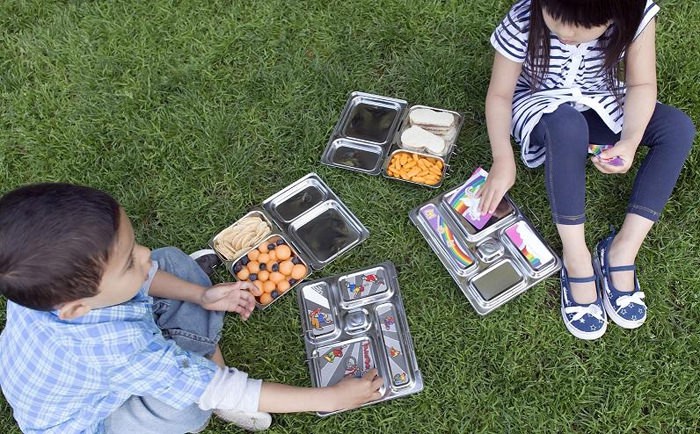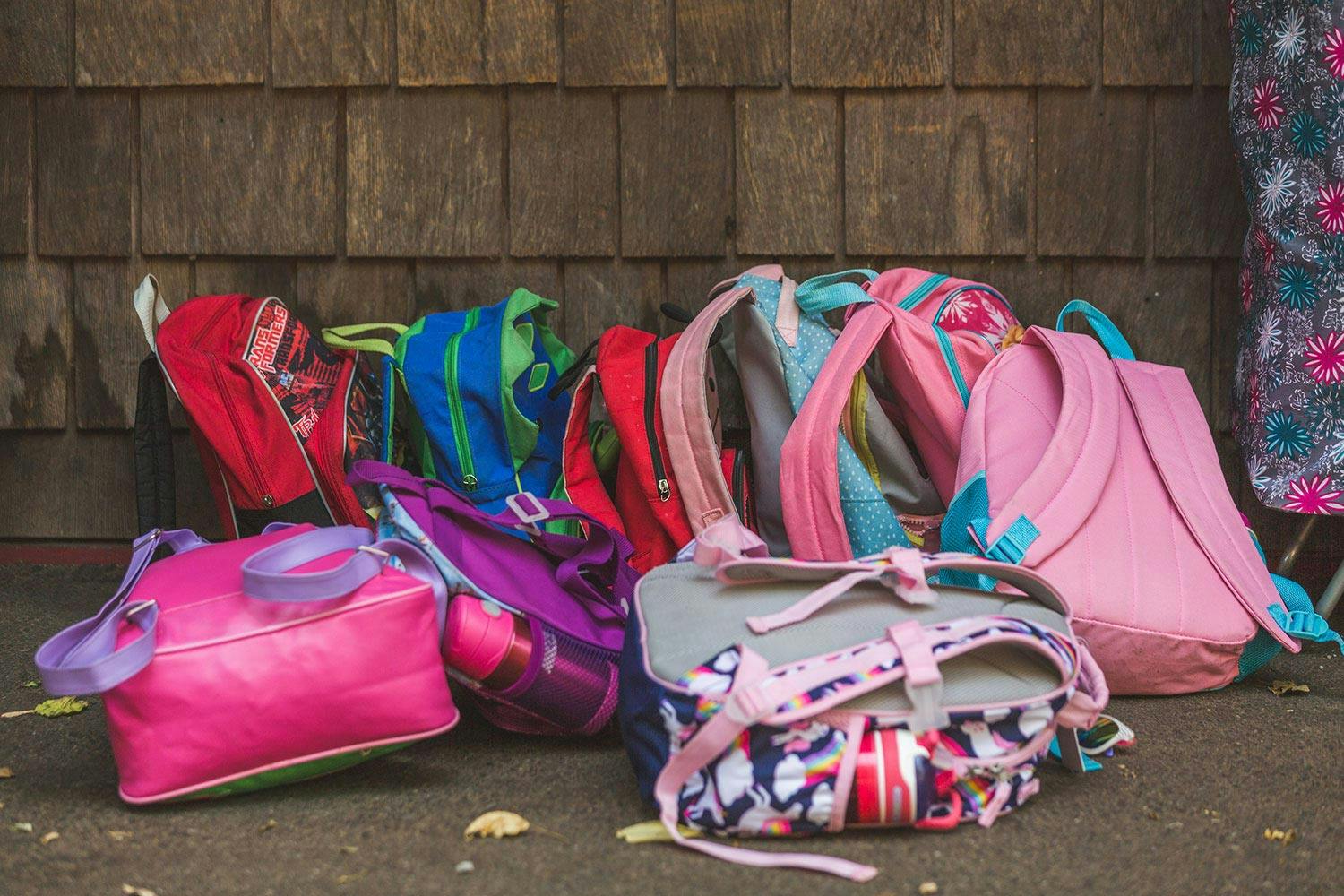Thinking Outside the PlanetBox
Black Sheep Parenting Tips for Back-to-School Season
The Black Sheep Parent shares some thoughts on getting ready for a new school year in a new climate reality.
Last week I took my kids to Calgary’s science centre. This was a survival parenting move, both because it’s easy entertainment for them, and because the weather was apocalyptic. The air was thick with smoke from the BC forest fires, rain was coming down in curtains, and the sun seemed to have only half-risen. The air quality index had been 10+ for days (it doesn’t get higher than 10+), and my kids were going batty after being cooped up so long. Apparently, everyone else’s kids were too — the science centre was alive with the sound of tiny feet and shrieking voices.
It was also the point in the summer when parents were running out of programming for their kids, and counting down the days until school starts. Cue a barrage of articles about how to have the BEST school year EVER. And yes, this is also a back-to-school article, but I won’t pretend to offer a stress-free fall season, a waste-free lunch system, or a hassle-free homework method.
This is the first September since 2013 that I’m not getting ready to welcome students to my own classroom. My kids aren’t quite school-age yet, so I’m feeling a bit left out of the frenzy. Three-and-a-half year-old Little Grey Lamb is starting a new year of forest preschool, and is excited for outdoor exploration, authentic risk, and getting as muddy as possible. Mini Ewe is 18 months, the age where we clap if she says anything that sounds like a word. But I haven’t stopped thinking about the school system, even though it’s not my job to navigate it right now.
The fires, floods, and heat waves are creating a sense of urgency for many people, including myself. Social scientist Mayer Hillman said in a recent Guardian interview (bluntly titled “We’re Doomed”):
So many aspects of life depend on fossil fuels, except for music and love and education and happiness. These things, which hardly use fossil fuels, are what we must focus on.
Education is still where I put so much hope, even though it’s far from perfect. As parents pack lunches, teachers plan lessons, and students sharpen pencils, here are some thoughts on getting ready for a new school year in a new climate reality.
In my backyard: Sustainability lessons start small
As a social studies teacher, I was fond of starting my school year by taking a look at what was happening at our doorstep. Alberta classrooms were filled with discussions about both the 2013 floods that led to 32 states of emergency, and the 2016 Fort McMurray fires that forced more than 88,000 people from their homes. I tried to allow students to dictate the depth of the discussion through project-based learning and critical thinking.
If you get a chance to connect with your child’s teacher(s) at a Meet the Teacher night or similar, here are some conversation starters:
- How do you think you’ll approach the crazy weather/fires/floods we’ve been having? As environmental journalist Michelle Nijhuis notes in The Atlantic, it’s crucial to allow younger kids to put their home at the centre of their learnings, and slowly unfold from there. She advocates for allowing the harder aspects of climate instability to be inquiry-based. Bigger kids will ask bigger questions, and be led into the more challenging aspects of our climate realities.
- Let me know if you’d like a guest speaker on [insert environmental issue here]; I have some great connections with local educators/activists/researchers, etc. Good teachers are always looking for ways to bring the material to life, and often we’re too time-crunched to source amazing people who want to come and talk about local issues.
All that glitters is not green
In my circle of friends, the PlanetBox reigns supreme for school lunches. It’s for good reason — made of non-toxic stainless steel, they’re durable, kid-friendly, and darn cute. That said, their price keeps them the domain of the privileged, and they sometimes feel like an environmentalist version of keeping up with the Joneses.

PlanetBoxes reign supreme in my group of friends, but can feel like an environmentalist version of keeping up with the Joneses.
Bamboo utensils, organic backpacks, staple-free staplers: the message is that if we buy these items, planet salvation will come. This doesn’t mean that we shouldn’t buy a PlanetBox or a reasonably priced alternative, but we parents might also want to consider these three questions this September:
- Is this a need or a want? Every semester, I would show my classes a photo series like Peter Menzel’s Material World: Belongings By Country to prompt discussions about diversity, disparity, and privilege. Yes, the photos show inequality, but they also help explore the difference between needs and wants. Author Ann Patchett made this point beautifully in her New York Times op-ed: “The things we buy and buy and buy are like a thick coat of Vaseline smeared on glass: We can see some shapes out there, light and dark, but in our constant craving for what we may still want, we miss life’s details.”
Just as we don’t need to buy Nike products to be fit, we don’t need to buy the latest lunch boxes to live sustainably.
- Am I the consumer or the product? The message of Naomi Klein’s 1999 classic, No Logo is that brands obtain power not from the products they make, but from the lifestyle they sell to consumers. As Klein says in an episode The Penguin Podcast, “As a company, you see your act of production being the creation of image.” It is undoubtedly preferable to buy a PlanetBox than a plastic Disney lunch box, but just as we don’t need to buy Nike products to be fit, we don’t need to buy the latest lunch boxes to live sustainably. Be aware of greenwashing, and make sure that the product is one that will legitimately cut down on your family’s eco-footprint.
- Do I have anything around the house that we can make do with instead? Not trying to buy our way to a greener planet sends a great message to our kids. Using household recyclables like bread bags or pasta sauce jars to package food in, and fixing things that are broken or worn, allows our kids to absorb the message that “reuse” and “repair” are some of the best Rs.
“Whose land is it anyway?” An acknowledgment of Indigenous perspectives
Being a white Canadian of settler descent, it is important I acknowledge the complexity of this section. I cannot speak on behalf of Indigenous communities, nor do I intend to; I will only attempt to expose the spaces where discussion can take place, rather than to lead a discussion myself.
In the preface to Whose Land is it Anyway? A Manual for Decolonization, Bev Sellars, former chief of the Xat’sull (Soda Creek) First Nation in BC, notes that:
The Indigenous people of this country knew and practised the intelligent way of living sustainably thousands of years before the newcomers arrived. Imagine how much healthier our environment would be if this way of living was respected instead of being viewed as a “pagan” practice.
We can’t separate education about the land from Indigenous perspectives and efforts to protect it. To learn more about these ideas from Indigenous thinkers, please read the manual mentioned above, or check out Indigenous and Decolonizing Studies in Education. I’d like to offer the following questions that non-Indigenous parents can chat about with their kids and their kids’ teachers:
- Does your school or classroom acknowledge the traditional territory on which it sits? If not, look it up on this map and advocate for this practice in the school. You can also explore some of the maps found on a site like The Decolonial Atlas and discuss how your family came to this land — what implications does this have? Indigenous peoples control only a tiny fraction of North American land; how did that come to be and what is the settler responsibility now?
- What are you learning in school about Indigenous peoples and teachings? Check out your kids’ textbooks, look for representations in the school, and ask their teachers. Ideally, in Canada, they will eventually be learning about residential schools, reserves, and calls for reconciliation. They should also have been brought to honour Indigenous ways of knowing, relationships with the land, positive stories of resilience, and specific individuals who have contributed to the fabric of North American society and protection of the environment.
- How will you, your family, teachers, and schools build relationships with Indigenous communities? This one is for EVERYONE.
The thought I’ll leave you with won’t be surprising if you read my last article: make sure to encourage and advocate for your child to spend as much time outdoors as possible while in school. Some of my most vivid memories as a student are of holding frogs, digging through soil, photographing marshlands over time, or climbing a rock wall. I worked as an outdoor educator through my 20s, and our written curriculum was sparse. The real learning was the immersion in the wilderness itself. Environmental educator David Sobel writes that the best way to create “environmentally aware, empowered students” is to support “children’s biological tendency to bond with the natural world.”
The most powerful curriculum is unwritten: it is the role-modeling our children witness, it is the homage we pay to those that protect and nurture the land, and it is the love they feel for their own backyard and its creatures.
